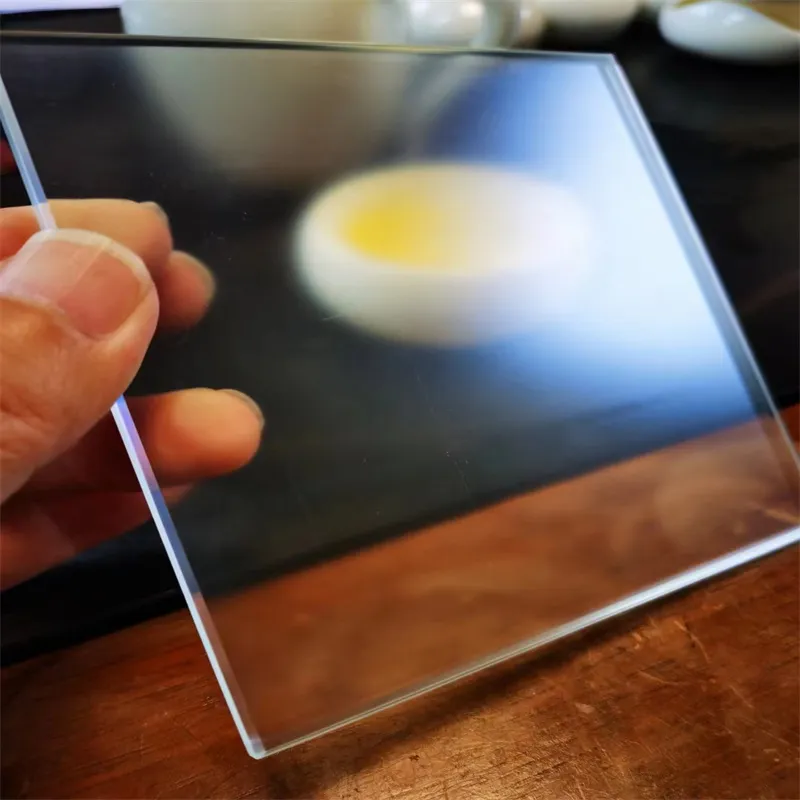Sep . 07, 2024 01:45 Back to list
Cracked Laminated Glass
Understanding Cracked Laminated Glass Causes and Solutions
Laminated glass has long been celebrated for its safety features and versatility, particularly in architectural applications. Composed of two or more glass layers bonded together by a durable interlayer, laminated glass is designed to hold together when shattered, providing enhanced safety and security. However, like any material, it is not immune to damage, with cracked laminated glass being a common issue that warrants attention.
The primary reasons for cracking in laminated glass often stem from environmental factors, structural stresses, or manufacturing flaws. Temperature fluctuations can exert significant pressure on the glass, leading to thermal stress cracks. This is particularly common in regions with extreme climate variations where rapid heating or cooling can occur. Additionally, if the glass is improperly installed, it may experience undue stress from the structural frame or other components of the building, contributing to cracks.
Another factor to consider is the quality of the materials used in the laminated glass itself. Low-quality interlayers can degrade over time, leading to delamination and cracks developing within the glass sheets. Furthermore, during the manufacturing process, any imperfections or inconsistencies can compromise the integrity of the glass, making it more prone to breaking when subjected to stress.
cracked laminated glass

The presence of cracks in laminated glass not only compromises its aesthetic appeal but also threatens its structural integrity. A cracked panel can reduce the safety features that make laminated glass a preferred choice in many applications, such as skylights, facades, and glass doors. In cases of severe cracking, the glass may shatter, though the interlayer typically holds the pieces together, preventing hazardous shards from scattering.
When dealing with cracked laminated glass, prompt action is essential. The first step is to assess the extent and nature of the damage. Minor cracks may not undermine the safety of the structure; however, significant cracks or those that compromise visibility or functionality usually require immediate attention. Consulting with a professional is advisable since they can provide an expert evaluation and recommend the best course of action, which may involve repair or replacement.
Repairing cracked laminated glass can sometimes be feasible, particularly when the damage is superficial. Specialized techniques and resins can be employed to fill in minor cracks, restoring clarity and strength to the glass. However, for extensive damage, replacing the entire panel is often the most effective solution, ensuring that safety standards are upheld.
In conclusion, while laminated glass offers numerous benefits, understanding the causes and solutions related to cracking is crucial. Awareness of potential stressors can help in maintaining the integrity of laminated glass, while timely repairs or replacements ensure that safety and aesthetic qualities are preserved in any architectural setting. Awareness, regular maintenance, and consultation with professionals are key to extending the lifespan and performance of laminated glass installations.
-
Safety and Style with Premium Laminated Glass Solutions
NewsJun.24,2025
-
Reinvents Security with Premium Wired Glass
NewsJun.24,2025
-
Premium Float Glass Line for Modern Architecture
NewsJun.24,2025
-
Low Emissivity Glass for Energy-Efficient Architecture
NewsJun.24,2025
-
High-Performance Insulated Glass Solutions for Modern Architecture
NewsJun.24,2025
-
Elevates Interior Style with Premium Silver Mirror
NewsJun.24,2025
Related PRODUCTS














